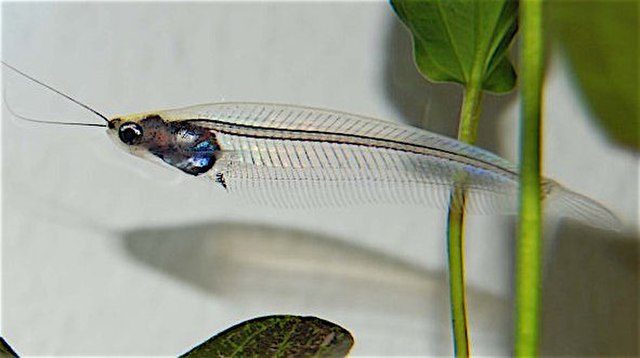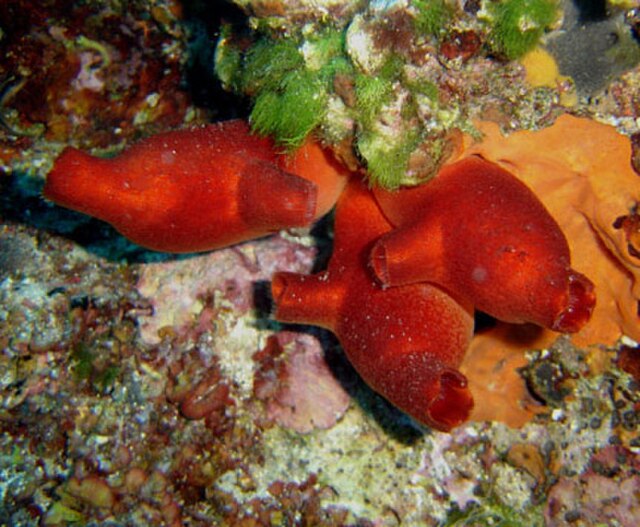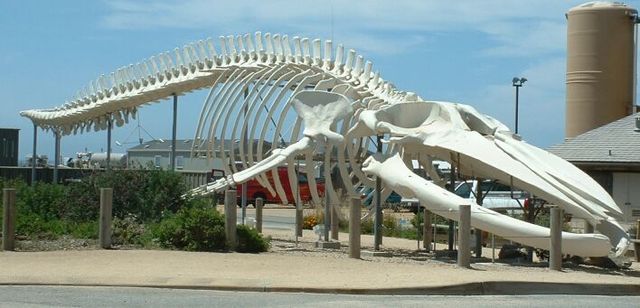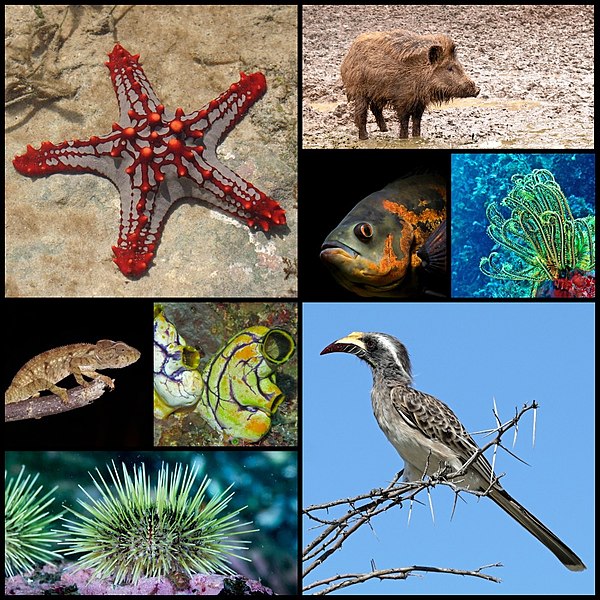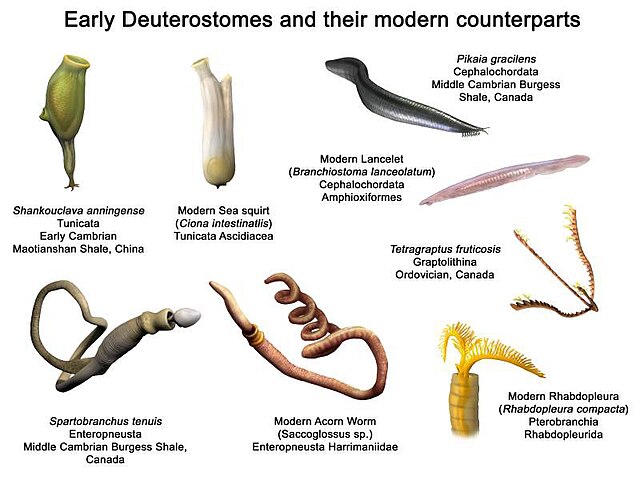A chordate is a deuterostomic animal belonging to the phylum Chordata. All chordates possess, at some point during their larval or adult stages, five distinctive physical characteristics (synapomorphies) that distinguish them from other taxa. These five synapomorphies are a notochord, a hollow dorsal nerve cord, an endostyle or thyroid, pharyngeal slits, and a post-anal tail. The name "chordate" comes from the first of these synapomorphies, the notochord, which plays a significant role in chordate body plan structuring and movements. Chordates are also bilaterally symmetric, have a coelom, possess a closed circulatory system, and exhibit metameric segmentation.
The glass catfish (Kryptopterus vitreolus) is one of the few chordates with a visible backbone. The spinal cord is housed within its backbone.
Cephalochordate: lancelet. Pictured species: Branchiostoma lanceolatum
Tunicates: sea squirts
A skeleton of the blue whale, the largest animal, extant or extinct, ever discovered. Mounted outside the Long Marine Laboratory at the University of California, Santa Cruz. The largest blue whale ever reliably recorded measured 98ft (30m) long.
Deuterostomes are bilaterian animals of the superphylum Deuterostomia, typically characterized by their anus forming before the mouth during embryonic development. Deuterostomia is further divided into 4 phyla: Chordata, Echinodermata, Hemichordata, and the extinct Vetulicolia known from Cambrian fossils. The extinct clade Cambroernida is also thought to be a member of Deuterostomia.
Deuterostome
Image: Early Deuterostome NT

